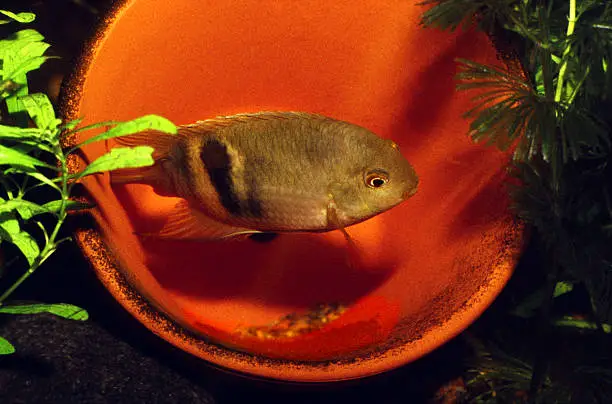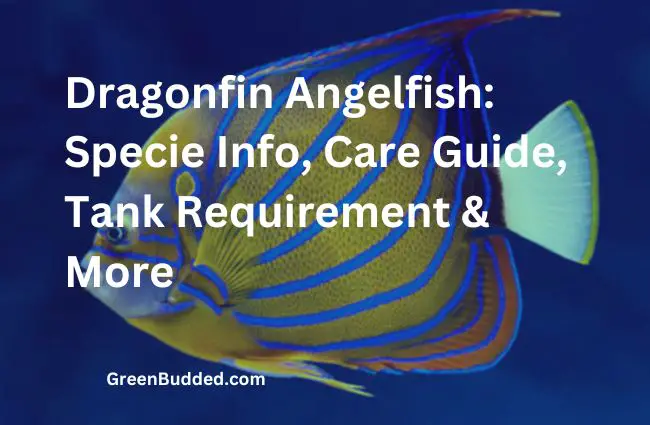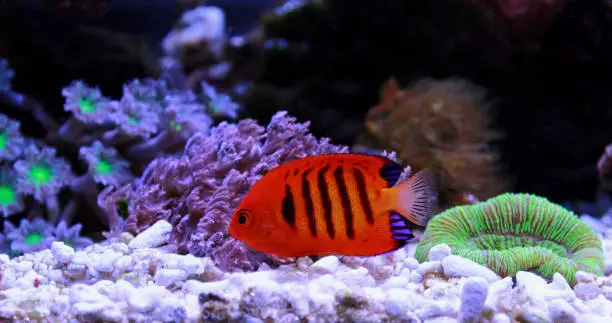Helpful Guides on each Category

As an expert breeder or a beginner in the business of rearing catfish, catfish quarantine is one critical aspect of catfish care that can’t be overlooked.
Catfish are popular freshwater aquarium fish known for their unique appearance and engaging behavior.
So I’ve merged wisdom from over 10 years of breeding African catfish into this post to create a thorough step-by-step guide on how to safely quarantine your catfish.
Before you take an action that can kill your entire catfish school, digest this guide to the end to ensurie the health of both new additions and the existing residents of your aquarium.
You may like: 33+ Best Catfish Bait. Attractive and Irresistible.
Why Quarantine Catfish?

Before diving into the nitty-gritty of catfish quarantine procedures, let’s see why you need to quarantine catfish and the important benefits you have from quarantining your catfish.
Disease Prevention
The primary reason for quarantine is disease prevention. Catfish, like other aquarium fish, can carry various diseases and parasites, even if they appear healthy. Introducing a diseased catfish into your main tank – trust me is not what you want.
Quarantining the catfish gives a protective barrier, allowing you to observe and treat new arrivals for any underlying health issues before they come into contact with your existing fish.
Remember, if you keep catfish for commercial purposes, less disease means more profit.
Stress Reduction
Moving catfish from one environment to another can be highly stressful for them. Stress weakens the fish’s immune system, making them more susceptible to diseases.
By placing them in a quarantine tank first, you give them time to acclimate to their new surroundings and recover from any transportation stress.
This reduces the risk of illness and helps your catfish adapt more smoothly to your main tank when the time comes.
Compatibility Assessment
Not all catfish species are compatible with one another. Quarantine provides an opportunity to assess the compatibility of new catfish with your existing fish. It allows you to observe their behavior, aggressiveness, and interactions without putting your established tank residents at risk.
Treatment and Medication
If you notice any signs of illness or parasites during the quarantine period, you can address these issues promptly without affecting your main tank.
Treating sick catfish in a separate environment prevents the spread of diseases to your other fish and increases the chances of a full recovery.
Now that we’ve established the importance of quarantine for catfish, let’s move on to the step-by-step procedures on how to quarantine your catfish effectively.
How to Set Up a Catfish Quarantine Tank
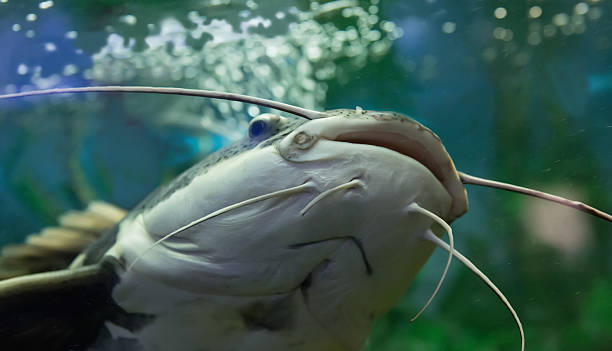
Before you can start quarantining your catfish, you’ll need to set up a dedicated quarantine tank. Here’s how to do it:
Choose the Right Tank
Select a quarantine tank that is appropriately sized for the number of catfish you plan to quarantine. A tank with a capacity of 20-30 gallons is typically sufficient for most catfish species. Make sure the tank is clean and free of any chemical residues.

Install Filtration and Heating
Provide a sponge filter or a small hang-on-back (HOB) filter in the quarantine tank to maintain water quality. Catfish are particularly sensitive to water parameters, so a reliable filtration system is crucial.
Additionally, use a heater to maintain the water temperature within the appropriate range for your catfish species.
Add Substrate and Decor
Place a substrate, such as fine gravel or sand, on the tank bottom.
Catfish often forage on the substrate, and this will mimic their natural environment. You can also add some hiding spots, caves, or PVC pipes for the catfish to seek refuge in and reduce stress.
Need decor ideas? See stunning choices.
Set Up Water Parameters
Test the water in the quarantine tank for parameters such as pH, ammonia, nitrite, and nitrate. Ensure that these parameters match, or are very close to, those in your main tank. Consistency in water parameters helps minimize stress during the transition.
Cycle the Tank
Before introducing any catfish, cycle the quarantine tank to establish a stable biological filtration system. This process will take a few weeks, so plan ahead and start cycling before you acquire new fish. You can use beneficial bacteria supplements to expedite the cycling process.
Maintain Water Quality
Regularly monitor and maintain water quality in the quarantine tank.
Perform partial water changes to keep ammonia and nitrite levels at zero and nitrate levels low. This will help ensure a healthy environment for your catfish.
Acquiring and Introducing Catfish to Quarantine
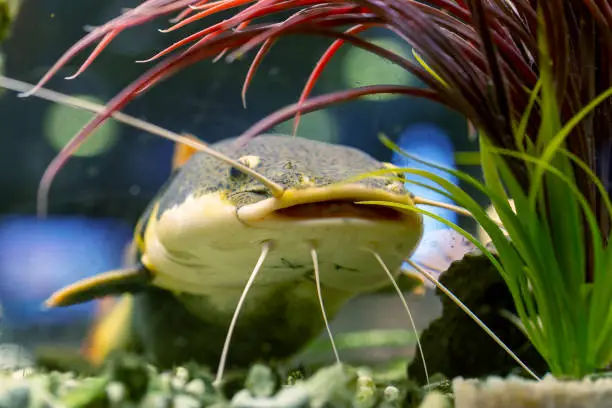
With your quarantine tank set up and ready, it’s time to acquire your catfish and introduce them to their temporary home.
Choose Reputable Sources
When selecting catfish for your aquarium, always choose reputable sources that prioritize fish health and disease prevention. Avoid purchasing catfish from overcrowded or poorly maintained tanks, as these are more likely to harbor diseases.
Inspect the Catfish
Before purchasing any catfish, carefully inspect them. Look for signs of disease or stress, such as clamped fins, discolored patches, white spots, or erratic swimming behavior. Choose healthy-looking individuals for quarantine.
Quarantine Period
Once you have your catfish, place them in the quarantine tank.
The duration of the quarantine period vary depending on your preferences, but it’s recommended to quarantine for a minimum of two to four weeks.
During this time, closely observe the catfish for any signs of illness or abnormal behavior.
Monitor and Feed
Check the water parameters regularly and feed the catfish a balanced diet appropriate for their species. Ensure that the catfish are eating and maintaining their weight, as a sudden loss of appetite can be a sign of illness.
Keep It Stress-Free
Minimize disturbances and stress factors in the quarantine tank. Avoid unnecessary handling, sudden changes in water parameters, or excessive lighting. The goal is to provide a calm and stable environment for your catfish.
Observing and Treating Catfish in Quarantine
While in quarantine, it’s crucial to closely monitor your catfish for any signs of illness or parasites. If you notice any issues, take appropriate action:
Disease Identification
Learn about common catfish diseases and their symptoms. Some common catfish diseases include ich (white spot disease), fin rot, and various fungal infections. If you suspect a disease, isolate the affected catfish immediately to prevent the spread to others.
Consult an Expert
If you’re unsure about the diagnosis or treatment, seek advice from an experienced aquarist or consult with a veterinarian who specializes in fish health. Accurate diagnosis is essential for effective treatment.
Medication
If treatment is necessary, follow the recommended dosage and administration instructions for the chosen medication.
Be aware that catfish are sensitive to certain medications, so work with your vet, research and choose treatments that are safe for your specific species.
Isolation
Isolate the sick catfish in a separate quarantine tank if possible. This prevents the disease from spreading to healthy catfish or other aquarium inhabitants.
Continue Observation
Continue to monitor the catfish in quarantine throughout the treatment period. Note any improvements or worsening of symptoms. Some diseases may require multiple rounds of treatment, so be patient and persistent.
Transitioning Catfish to the Main Tank
After the quarantine period is complete, and you’re confident that your catfish are healthy and disease-free, it’s time to transition them to the main tank. Here’s how to do it safely:
Acclimation
Before moving the catfish, acclimate them to the water conditions in the main tank. Use the drip acclimation method by slowly introducing small amounts of main tank water into the quarantine tank over a period of 1-2 hours. This helps them adjust to any differences in water parameters.
Net Transfer
Gently net the catfish and transfer them into the main tank. Avoid using your hands to handle the fish, as this can damage their delicate skin and scales. If it’s the type that has piercing barbels, you could get hurt too.
Has your Catfish ‘barbed’ you yet? here what to do immediately.
Observe Behavior
After introducing the catfish to the main tank, closely observe their behavior for the first few hours. Ensure that they are not being harassed or overly aggressive toward other tank inhabitants.
If aggression is an issue, rearrange the tank decor to provide more hiding places.
Maintain Vigilance
Continue to monitor the catfish and the overall health of your main tank regularly. Sometimes, stress from the transition can trigger latent diseases. Be prepared to isolate and treat any fish showing signs of illness promptly.
Conclusion: Catfish Quarantine
Quarantine procedures for catfish are an essential part of responsible aquarium management.
By taking the time to quarantine new catfish arrivals, you can protect your existing aquatic community from potential diseases, reduce stress on your fish, and ensure a smoother transition into your main tank.
Remember to maintain excellent water quality, closely observe your catfish, and be prepared to address any health issues that may arise. With proper quarantine practices, you can enjoy a healthy and thriving catfish tank for years to come.
Important Links
Having Problem with your Catfish?
Are you facing an infestation or have a situation where you need help?
Send our experienced fish keepers and vets a message, and we’re very ready to help.


